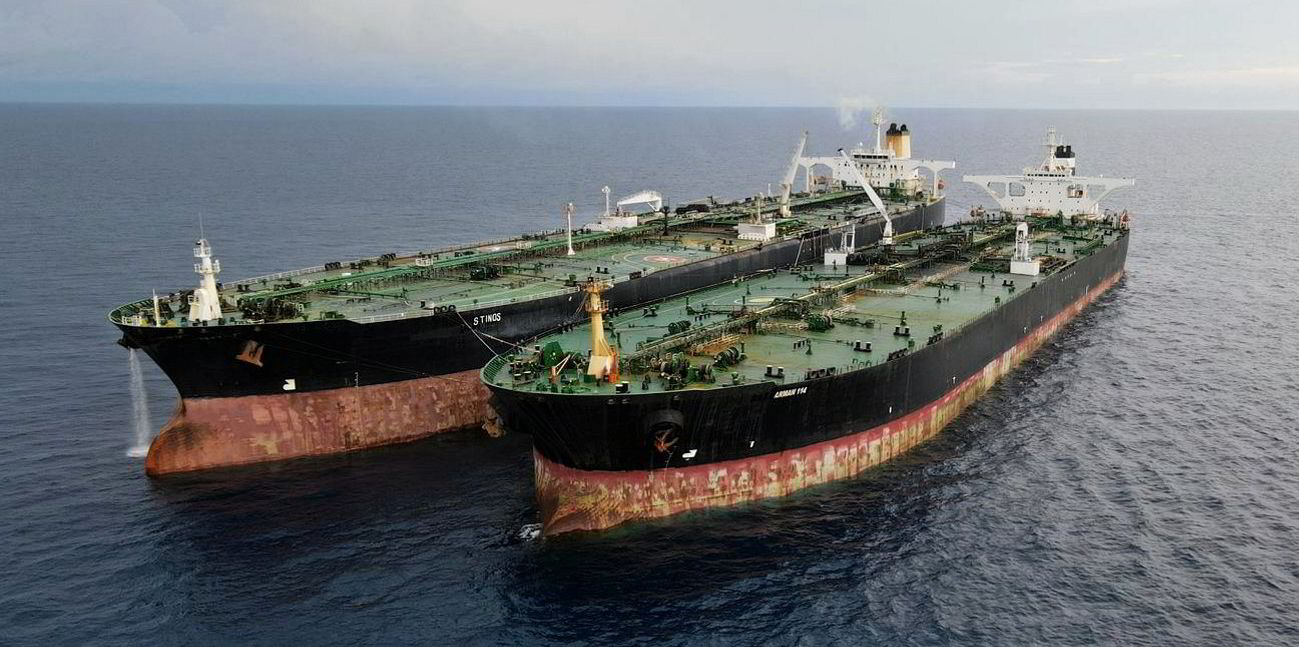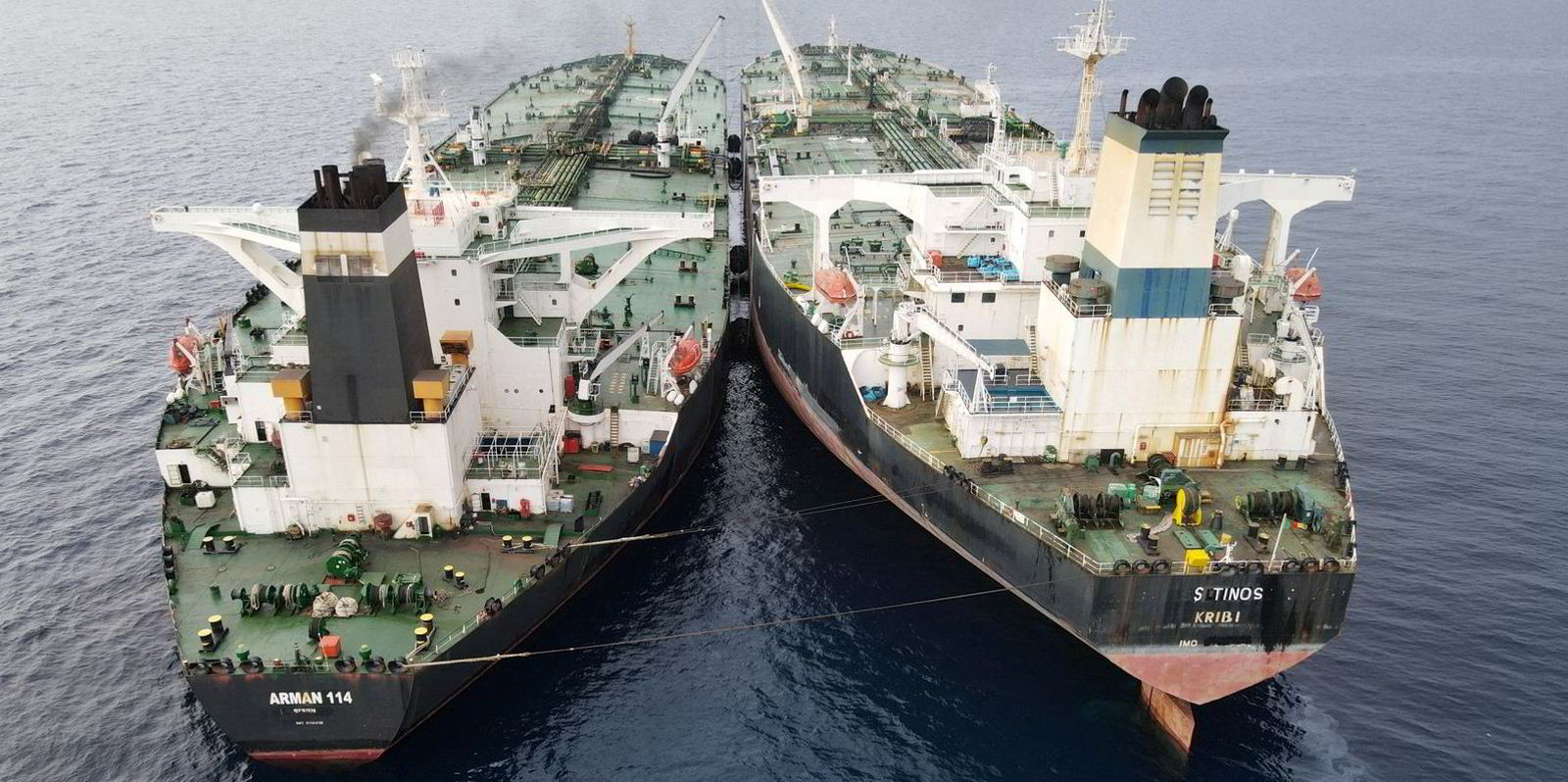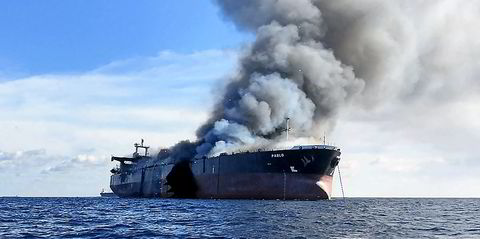A mystery “ghost ship” tied to an illicit ship-to-ship (STS) transfer operation off the coast of Indonesia has been identified as a tanker involved in the sanctioned trade of Venezuelan oil.
Indonesia’s maritime and security agency, Bakamla, last week pursued and seized the Iran-flag 300,600-dwt Arman 114 (built 1997), saying it was transferring 2m barrels of oil to another VLCC, the S Tinos, without the necessary permits .
The S Tinos was not stopped during the joint Indonesian and Malaysian armed operation, but questions persist over its identity, as it had reportedly been scrapped in 2018.
Two tanker tracking groups have now identified it as the 306,100-dwt Lilu (built 2000), which appears to have been operating as the S Tinos for at least a year, in an apparent attempt to disguise its trading activity.
Photographs released by Bakamla of the aborted transfer suggested that the IMO number on the vessel had been painted over.
TankerTrackers.com, which tracks crude shipments from geopolitical hot spots including Iran, Russia and Venezuela, said it first detected the Lilu carrying the name S Tinos in June last year when loading oil at the Jose terminal in Venezuela.
Its most recent loading in Venezuela, its eighth, was in March this year, when the name S Tinos was visible again, said the group.
“The practice of using dead tanker names is very common because PDVSA [state oil company Petroleos de Venezuela SA] enters these aliases in their loading documentation, as such documents tend to get leaked out to the media,” it added.
TankerTrackers.com, headed by Samir Madani, said its conclusion on the identity of the vessel was based on the analysis of thousands of photographs of tankers that are then cross-checked with AIS data.
Tankers that ship oil from PDVSA, which was placed under sanctions by the US in 2019, often spoof their locations to suggest they are off the coast of places such as West Africa, it said.
Spoofing tactic
Other sources suggested that Lilu was recorded using the name of S Tinos in November 2021. The tactic of using the names of dead ships as aliases has been repeatedly seen with tankers involved in the Venezuelan trade, they said.

Some tankers have used two or three different names within a year. Another tactic is to use the name of a ship involved in the same sanctioned trades.
The Cameroon-flag Lilu was last inspected by port authorities in 2016, according to Equasis. Its registered owner and commercial manager is a single-ship company, Laetitia Ventures, based in the Marshall Islands.
Its technical manager is listed as Pink Waters Ship Management, based in Sri Lanka. Laetitia Ventures could not immediately be contacted. Pink Waters has been approached for comment.
Details of the operation targeting the Arman 114 were revealed on Tuesday by Bakamla after it detained the ship, its Egyptian captain and Syrian crew.
The agency said both ships tried to leave the area with transfer equipment still attached as officials moved in. They focused their attention on the Arman 114 as it entered Malaysian waters.
The Arman 114 was previously best known under its former name of Grace 1 when it was seized by British Royal Marines in July 2019 and held in Gibraltar for six weeks on suspicion of delivering oil to Syria.






